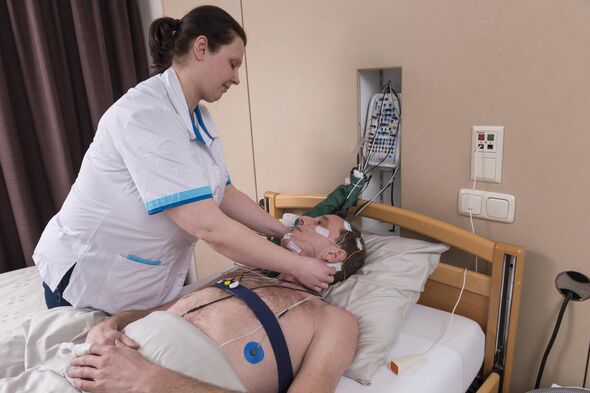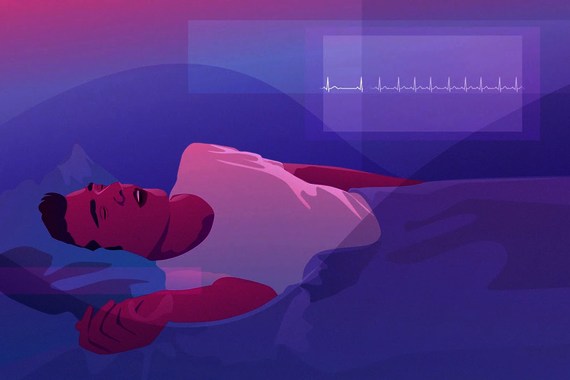
- Research
- 27/11/2019
Detecting sleep apnea in your own bed
In the future, you will no longer have to spend the night connected to wires to test for sleep apnea, a common sleep disorder. Thanks to a new method developed by researchers from TU/e, Philips and Sleep Medicine Center Kempenhaeghe, patients will soon be able to take the measurements comfortably in their own beds. The method, which is based on an algorithm that can determine sleep apnea from variations in heart rhythm, is described in the journal Scientific Reports.
No less than ten percent of the Dutch population suffers from a sleep disorder, sleep apnea being the most common. In this case, the tongue or uvula will block the airway several times a night, causing the patient to temporarily have a lack of air. As a result, sleep remains superficial, which, among other things, leads to fatigue and concentration problems, and in the long run even increases the risk of cardiovascular disease. Where sleep apnea is usually easy to treat, the diagnosis is often made late.
In order to diagnose sleep apnea, patients now have to undergo a sleep test. During the night, doctors measure brain activity, breathing and oxygen levels in the blood, among other things. But sleeping with all kinds of wires on the head makes the measurement unpleasant and representative to only a limited degree. Moreover, only one night can be measured in this way.
Heart rhythm reveals sleep apnea
TU/e researcher Sebastiaan Overeem, who also works as a somnologistat Sleep Medicine Center Kempenhaeghe, together with PhD student Gabriele Papini and colleagues, now presents a new, simple method for diagnosing sleep apnea. They found that certain variations in the heart rhythm can be a good indication for sleep apnea. Overeem: "By analyzing these variations we are able to determine whether someone is awake or asleep. We also discovered patterns that can detect stops in breathing.”
After that discovery, Overeem and his team worked on an algorithm that can analyze these data independently. The algorithm learned from existing data from over 250 patients to accurately determine when certain cardiac rhythm patterns indicate sleep apnea. Overeem: “Our method appears to be very much in line with the current measurement methods.”
The new method works even for people with a complex mix of sleep disorders. “This means that patients can be measured at home for an extended period using, for example, a smart plaster, wearable or mattress,” says Overeem.
Measuring over an extended periode
The next step is to apply the algorithm to data generated by wearables. To this end the researchers will soon start a new study aimed at people who have just been referred to a sleep clinic by their general practitioner. “They will be asked to wear a medical smart watch for two weeks, after which we can compare the results of our algorithm with those from the extensive sleep study,” explains Overeem.
In addition to validating the algorithm, Overeem would like to investigate whether people in the clinic sleep differently than in their own beds. He also wonders whether measuring over an extended period makes the diagnosis of sleep apnea more reliable and whether the severity of the disorder can be better assessed in this way. Overeem: “Hopefully these results will provide an incentive to further improve the cheap but often unreliable wearables in the market, so that they can be used for medical applications.”



Discussion